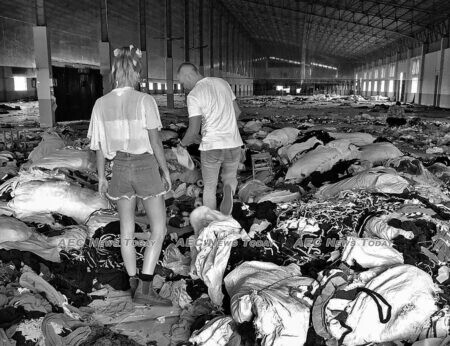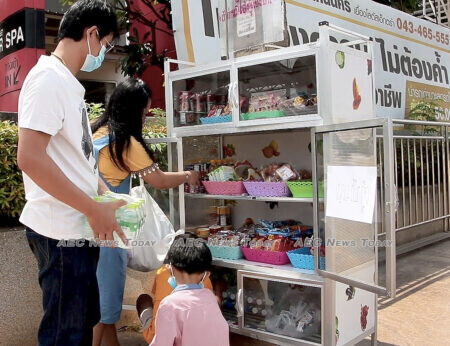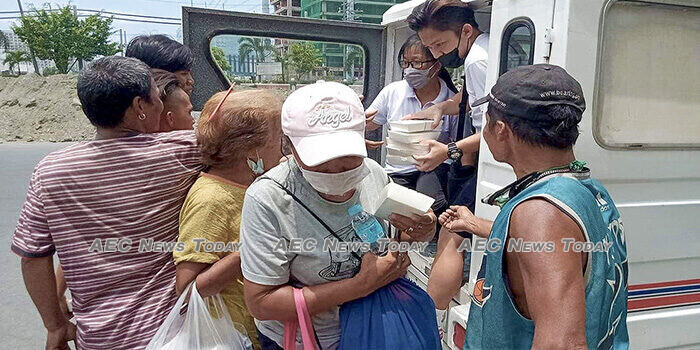A public health crisis like the COVID-19 pandemic destroys economic growth and pushes millions into poverty. Without policy interventions, it will also worsen income inequality.

As of June 16, 2020, there have been more than 885,900 reported cases of COVID-19 and about 23,400 deaths in 33 out of the 45 economies in developing Asia. The pandemic is inflicting tremendous human, social and economic pain on society at large. As countries implement social distancing and lockdown measures, economic growth has stalled and unemployment has surged.
If the pandemic lasts for six months, it could reduce the region’s gross domestic product (GDP) by $2.5 trillion, destroy an equivalent of 167 million full-time jobs and push 140 million people into poverty.
Without policy intervention, the pandemic will worsen the region’s income inequality as well. Reducing income inequality is a major challenge many countries in Asia Pacific face and it forms a key part of the region’s sustainable development goals (SDGs).
Five ways income inequality will worsen
COVID-19 is likely to worsen the region’s income inequality at least five ways.
First, unskilled workers will be hit harder than skilled workers. Skilled workers are more difficult to replace and so the unskilled are more likely to lose their jobs or experience wage cuts. The possibility of working from home is also greater for high-skilled occupations than for low-skilled ones.

Second, the economic contraction caused by the pandemic affects both labour and capital, but workers, on average poorer, are likely to be hurt more severely. It is easier for capital-intensive production, such as manufacturing, to manage containment measures than labour-intensive production such as the service sector.
This is because the former involves working with machines, while the latter involves directly serving people. Firms also have the option of substituting workers with machines and technology.
Third, the pandemic will have a disproportionate impact on vulnerable groups, such as micro, small and medium enterprises (MSMEs), women and the elderly. MSMEs are more vulnerable to economic shocks than large firms and often provide informal employment with inadequate social protection and lower wages.
Women are more likely to work in labour-intensive industries than men and also get paid lower average wages. The elderly are the most vulnerable to the epidemic, earning less than the working age population. Those working on the frontlines to deliver food, medicine and provide paid care services face the greatest risk of infection.
Fourth, the pandemic could increase regional income inequality, as poor regions often have less capacity to implement containment measures and provide adequate healthcare services.
Poor regions also face greater constraints in providing fiscal support to local economies and affected groups. When poor regions rely on remittances from migrant workers, they also become affected by job losses in rich areas.
Finally, government stimulus measures could exacerbate income inequality if they are not well-designed and sufficiently targeted at protecting the jobs and livelihoods of low-income households and vulnerable groups. MSMEs might be unable to apply for liquidity support programs made available by the government or central bank.
Health disasters increase income inequality
Historical experience shows that income inequality often falls in the aftermath of catastrophic disasters such as wars, earthquakes and stock market crises, because they involve large scale wealth destruction.
But a study of five recent pandemics, including SARS (2003), H1N1 (2009), MERS (2012), Ebola (2014), and Zika (2016) shows that health disasters increase income inequality as they involve large scale job destruction that disproportionately affects lower-income groups.
Worsening income inequality can intensify social tensions and constrain consumption, and poses a risk to economic recovery. But the following policy measures can help dampen the devastating impact of COVID-19 on growth, poverty, and income inequality in the Asia Pacific.
The first is to contain the outbreak as quickly as possible. This requires the effective implementation of testing, contact tracing, social distancing and lockdown measures supported by necessary social protection measures.
For those countries that have successfully reduced the number of daily infections to very low levels, vigilance is needed to prevent a second or third wave of infections. This should happen alongside investment in healthcare systems to build the capacity to treat severe cases and reduce fatalities.

The second is to protect jobs, those who have lost their jobs, and the most vulnerable in society.
The policies to achieve this vary according to in-country circumstances, but include support for firms (especially MSMEs) through tax cuts, wage subsidies and credit guarantees, extending unemployment and social assistance to those severely affected, and fiscal transfers to poor regions to combat the outbreak.
The third is to support the economic recovery in an inclusive manner.
Countries should combine short-term stimulus with long-term strategies for sustainable and inclusive growth.
This requires policy packages with a focus on investment in education and health, building sustainable public transport, providing basic social services and supporting rural development.
Social protection should also be strengthened through the provision of social safety nets for the informal sector and by working towards universal health coverage (UHC).
Governments in Asia and the Pacific are taking action. More than 40 developing Asian economies have announced income support and job protection measures amounting to $1.5 trillion or 5.6 per cent of regional GDP.
The COVID-19 pandemic will worsen income inequality in the Asia Pacific. But well-designed policy responses can avert it.
This article was written by Juzhong Zhuang, a senior economic advisor for the Economic Research and Regional Cooperation Department at the Asian Development Bank (ADB). It first appeared on East Asia Forum under a Creative Commons License and is reproduced here with its permission.
Feature Photo CORA
Related:
- COVID-19 in East Asia: How the Region’s Higher Education Systems are Addressing the Crisis to Adapt to the Future (World Bank Blogs)
- UNDRR Asia-Pacific COVID-19 Brief: Combating the dual challenges of climate-related disasters and COVID-19 (Reliefweb)
- Asia-Pacific countries step up measures to combat COVID-19 (Xinhua)
East Asia Forum
It consists of an online publication and a quarterly magazine, East Asia Forum Quarterly, which aim to provide clear and original analysis from the leading minds in the region and beyond.
Latest posts by East Asia Forum (see all)
- China’s South China Sea bullying seeing increased blowback from Asean claimants – February 2, 2022
- Illusionary, delusionary or visionary? Cambodia tests living with COVID-19 – December 6, 2021
- Prioritising a Philippine–EU FTA is vital for post-pandemic recovery – July 26, 2020
- Time for Asean to stand up for itself in the South China Sea – July 25, 2020


